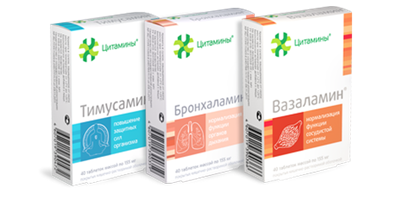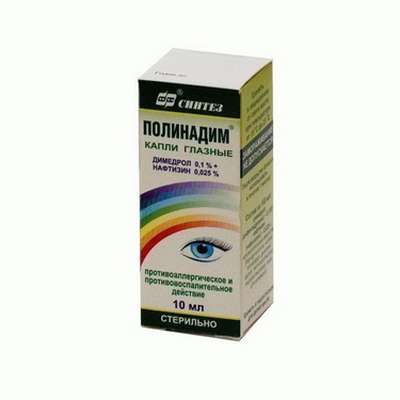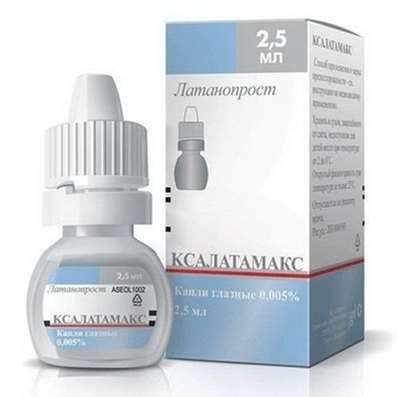Instruction for use: Duphaston
I want this, give me price
Active substance Dydrogesterone
ATX code G03DB01 Dydrogesterone
Pharmacological group
Estrogens, gestagens; Their homologues and antagonists
Nosological classification (ICD-10)
N80 Endometriosis
Endometrioid endometriosis
N91 Lack of menstruation, meager and rare menstruation
Amenorrhea, Amenorrhea hypogonadotropic, Amenorrhea is prolactin-dependent, Oligomenorrhoea, Shortening of the secretory phase of the menstrual cycle, Menstrual disorders, Menstruation disorders, Prolactin-dependent amenorrhea without galactorrhea
N93 Other abnormal bleeding from the uterus and vagina
Atonic uterine bleeding, Prolonged menstruation, Blood loss during menstruation, Bleeding from the genitourinary system, Bleeding uterine dysfunctional, Bleeding from the genital tract of organic etiology, Uterine bleeding, Menorrhagia with fibroids, Functional uterine bleeding, Abnormal bleeding from the genitals in women
N94.3 Premenstrual tension syndrome
Pronounced premenstrual syndrome, Menstrual psychosomatic disorder, Menstrual syndrome, Premenstrual tension, Premenstrual status, Premenstrual period, Premenstrual syndrome, Menstruation syndrome
N94.6 Dysmenorrhea Unspecified
Pain during menstruation, Functional disorders of the menstrual cycle, Menstrual cramps, Emmeniopathy, Pain during menstruation, Painful menstrual irregularities, algomenorrhea, algomenoreya, Pain smooth muscle spasm, Pain spasm of smooth muscles (renal and biliary colic, intestinal spasms, dysmenorrhea), Pain spasm of smooth muscles of internal organs (kidney and biliary colic, intestinal spasms, dysmenorrhea), Disalgomenoreya, dysmenorrhea, Dysmenorrhea (essential) (Exfoliative), menstrual disorder, menstruation painful, metrorrhagia, Violation of the menstrual cycle, Menstrual irregularities, Prolaktinzavisimoe menstrual disorders, Prolaktinzavisimoe menstrual dysfunction, Pain spasm of smooth muscles of internal organs, Spasmodic dysmenorrhea, Primary disalgomenoreya
N95.1 menopausal and menopausal status of women
Atrophy of the mucosa of the lower genital tract, caused by estrogen deficiency; Vaginal dryness; Autonomic dysfunction in women; gipoestrogeniya state; Deficiency of estrogen in menopausal women; Degenerative changes of the mucous membrane in the menopause; Natural menopause; an intact uterus; climacteric; Menopause women; Menopause in women; menopausal depression; Climacteric ovarian dysfunction; Menopause; Climacteric neurosis; Menopause; Menopausal symptoms complicated psychovegetative; Climacteric syndrome; Climacteric vegetative disorders; Climacteric psychosomatic disorder; menopausal disorders; Menopausal disorders in women; menopausal condition; Climacteric vascular disorders; Menopause; Menopausal vasomotor symptoms; menopausal period; Lack of estrogen; Feeling the heat; Pathological menopause; perimenopause; menopause; postmenopausal; Premature menopause; premenopauznom period; tides; hot flashes; flushing in the Meno and postmenopausal; Hot flashes / hot flashes in menopause; Heart attack during menopause; Early menopause in women; Disorders of menopause; climacteric syndrome; Vascular complications of menopause; Physiological menopause; Estrogendefitsitnye state; premature Menopause
N96 Habitual miscarriage
Miscarriage habitual, Habitual abortion, Habitual miscarriage
N97 Female infertility
Female infertility in anovulation, Hyperprolactinemic infertility, Hyperprolactinaemia with infertility, Endocrine infertility, Infertility due to hypothalamic-pituitary dysfunction, Infertility infertility, Infertility, Infertility on the background of hyperprolactinaemia, Functional infertility, Marriage is infertile, Infertility of ovarian genesis, Stimulation of the growth of a single follicle
O20.0 Threatened abortion
Abortion threatening, threatening miscarriage, Spastic conditions with the risk of abortion, Threatened miscarriage in the first trimester of pregnancy, The threat of miscarriage, threatened abortion, The threat of miscarriage, Threatened spontaneous miscarriage
Composition and form of release
Tablets, coated with a coating.
Dydrogesterone 10 mg
Auxiliary substances: lactose monohydrate; Hypromellose; corn starch; Silicon dioxide colloid; Magnesium stearate
Shell: Opadry white Y-1-7000 (hypromellose, polyethylene glycol 400, titanium dioxide (E171)
In a blistere of 20 pcs .; In a box of cardboard 1 blister.
Description of dosage form
Round, biconvex tablets are white, with beveled edges, covered with a shell, with an engraving "S" above the "6" sign on one side of the tablet, with a risk and a sign "155" on both sides of the risks - on the other.
pharmachologic effect
The pharmacological action is gestagenic.
Pharmacodynamics
Duphaston® (dydrogesterone) is a progestogen that is active when ingested. Dydrogesterone in its molecular structure, chemical and pharmacological properties is very close to natural progesterone. Due to the fact that dydrogesterone is not a derivative of testosterone, it does not have the side effects characteristic of most synthetic progestogens, the so-called. "Androgenic" progestogens. Dydrogesterone does not possess estrogenic, androgenic, anabolic, glucocorticoid and thermogenic activity. Acting as a progestogen component of hormone replacement therapy (HRT) in menopause, dydrogesterone helps maintain the beneficial effect of estrogens on the lipid profile of the blood. However, unlike estrogens, which usually negatively affect the blood coagulation system, dydrogesterone does not affect the coagulation indicators. Does not affect the metabolism of carbohydrates and liver function. Dydrogesterone, when administered orally, selectively affects the endometrium, thereby preventing an increased risk of endometrial hyperplasia and / or carcinogenesis in conditions of excess estrogens. It is indicated in all cases of endogenous progesterone insufficiency. The drug has no contraceptive effect. When treating dydrogesterone therapeutic effect is achieved without suppressing ovulation or menstrual dysfunction. Dydrogesterone makes it possible to conceive and maintain pregnancy during treatment.
Pharmacokinetics
After ingestion, dydrogesterone is quickly absorbed from the digestive tract (gastrointestinal tract), Cmax in the blood plasma is reached after 2 hours. Binding to plasma proteins is 97%. Metabolism in the liver occurs by hydroxylation of the ketone groups of the 20th carbon atom. Along with this, hydroxylation of methyl groups of the 21st carbon atom and in a very small volume - 16-α carbon atom was also observed. With urine output from 56 to 79%; After 24 hours, approximately 85% is output, after 72 hours the elimination process practically ends. Information on the delay or increase in the action of dydrogesterone with limited renal function has not been reported to date. Metabolites are found in the urine mainly in the form of conjugates of glucuronic acid. Presence of unchanged substance in urine was not detected.
Indications
Progesterone insufficiency: endometriosis; Infertility due to luteal insufficiency; A habitual and threatening miscarriage against the established progesterone deficiency, premenstrual syndrome, dysmenorrhea, irregular menstruation, secondary amenorrhea (in combination with estrogen therapy), dysfunctional uterine bleeding.
HRT: to neutralize the proliferative effect of estrogens on the endometrium within HRT in women with disorders due to natural or surgical menopause in the intact uterus.
Contraindications
Hypersensitivity to dydrogesterone or other components of the drug.
With caution - skin itching during the preceding pregnancy.
At present, there is no evidence of a negative effect of dydrogesterone in patients with chronic renal insufficiency.
pregnancy and lactation
The drug can be used during pregnancy (see the "Indications" box). Dydrogesterone is excreted in the mother's milk, so it is not recommended to take breastfeeding while taking the drug.
Side effects
From the hemopoietic system: in isolated cases - hemolytic anemia.
From the side of the immune system: in very rare cases - hypersensitivity reactions.
From the central nervous system (central nervous system): headache / migraine.
From the hepatobiliary system: rarely - minor violations of the liver, sometimes accompanied by weakness or malaise, jaundice and pain in the abdomen.
On the part of the reproductive system: in rare cases, the emergence of breakthrough bleeding, which can be prevented by increasing the dose of the drug; Hypersensitivity of mammary glands.
From the skin and subcutaneous tissue: rarely - skin rash, itching, urticaria; Very rarely - Quincke's edema.
General disorders: very rarely - peripheral edema.
Interaction
Inducers of microsomal liver enzymes (phenobarbital, rifampicin) can accelerate the metabolism of dydrogesterone and reduce the effect.
Dosing and Administration
Inside. Endometriosis: 10 mg 2-3 times a day from day 5 to day 25 or continuously.
Infertility (due to luteal insufficiency): 10 mg / day from the 14th to 25th day of the cycle, the course is carried out continuously for 6 consecutive cycles or more, it is recommended to continue treatment in the first months of pregnancy (as with a habitual abortion).
Threatening abortion: 40 mg once, then - 10 mg every 8 hours until the symptoms disappear.
Habitual abortion: 10 mg 2 times a day until 20 weeks of pregnancy, followed by a gradual decrease in the dose.
Premenstrual syndrome: 10 mg 2 times a day from 11 to 25 day cycle.
Dysmenorrhea: 10 mg twice daily from day 5 to day 25.
Irregular menstruation: 10 mg twice daily from 11 to 25 days of the cycle.
Amenorrhea: Estrogens - 1 time per day from 1 to 25 days, Duphaston® - 10 mg 2 times a day from 11 to 25 days of the cycle.
Dysfunctional uterine bleeding: to stop bleeding - 10 mg 2 times a day for 5-7 days; For the prevention of bleeding - 10 mg 2 times a day from 11 to 25 day cycle.
HRT in combination with estrogens: with a continuous regimen of estrogen intake - 10 mg of Dufaston ® once a day for 14 days within a 28-day cycle. In a cyclic regimen of estrogen administration: Duphaston® is 10 mg once a day for the last 12-14 days of taking estrogens. If a biopsy or ultrasound indicates insufficient reaction to a progestogen preparation, the daily dose of dydrogesterone should be increased to 20 mg.
Overdose
No symptoms of overdose have been reported. At casual reception in a dose considerably above therapeutic, gastric lavage is recommended.
Treatment: symptomatic. There is no specific antidote.
special instructions
Some patients may experience breakthrough bleeding, which is prevented by increasing the dose of the drug. In the case of the appointment of dydrogesterone in combination with estrogens (for example, for HRT), you should carefully read the contraindications and warnings associated with the use of estrogens. Before starting the combination of dydrogesterone and estrogen (for HRT) a complete history should be collected. During treatment it is recommended to periodically monitor the individual tolerability of HRT. The patient should be informed about what changes in the mammary gland she should be told to the doctor or nurse. Studies involving mammography should be conducted in accordance with the generally accepted screening of patients. In women receiving HRT, an accurate assessment of the risk and benefit is assessed over time. Sometimes breakthrough bleeding may occur during the first months of treatment. If breakthrough bleeding occurs after a certain period of taking the drug or continues after the course of treatment, the cause should be studied, an endometrial biopsy should be done to exclude malignant changes in the endometrium.
Conditions for which observation is necessary: Patients should be carefully examined for history of a progesterone-dependent tumor (eg, meningioma), and if it progresses during pregnancy or during previous hormonal therapy.
Other conditions: patients with genetically determined galactose intolerance, lactase deficiency or malabsorption syndrome should not take this medication.
The drug does not affect the ability to drive and other mechanisms.
Storage Conditions
In a dry place, at a temperature of no higher than 30 ° C, in the original packaging.
Keep out of the reach of children.
Shelf life
5 years.
Do not use after the expiry date printed on the package.

 Cart
Cart





